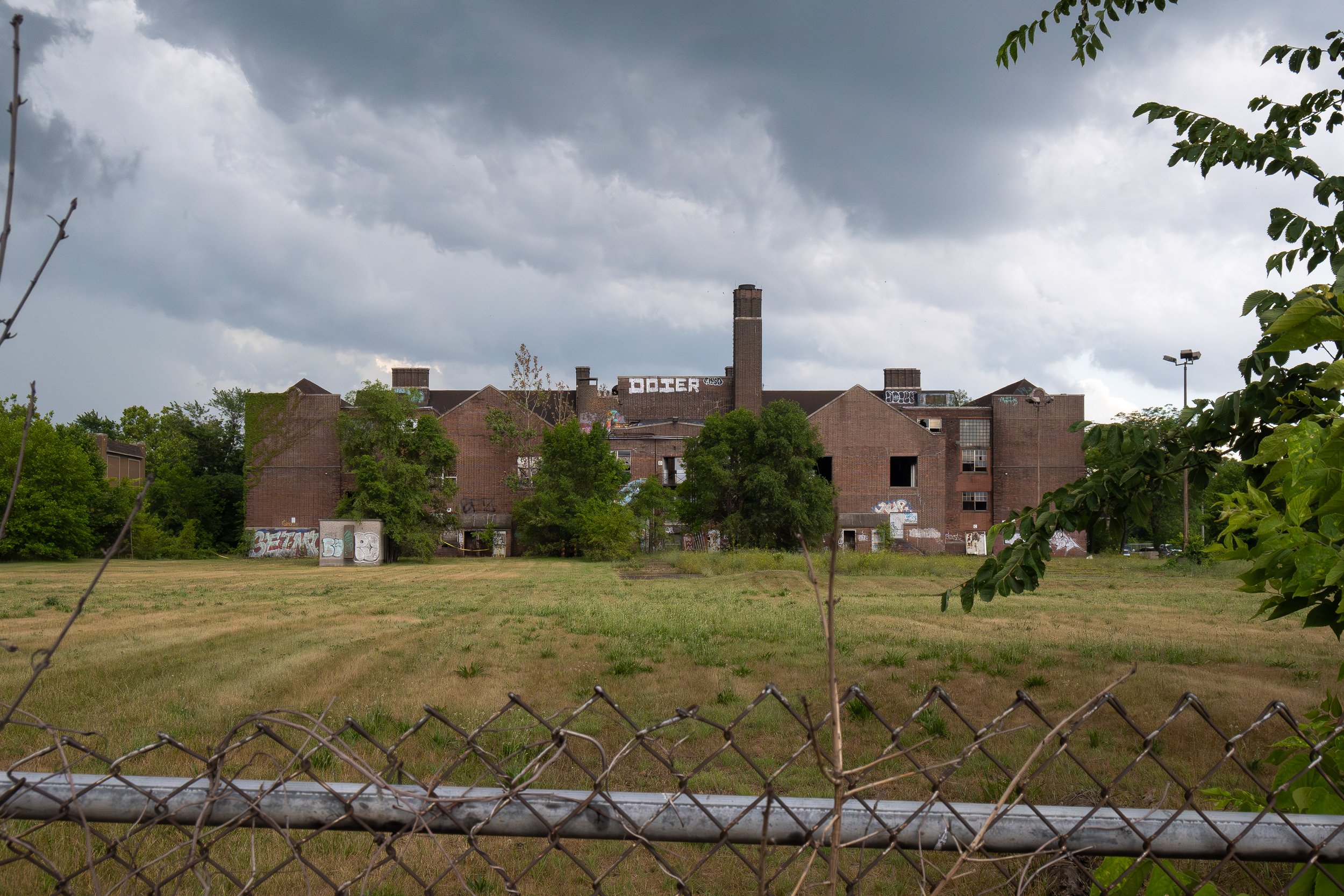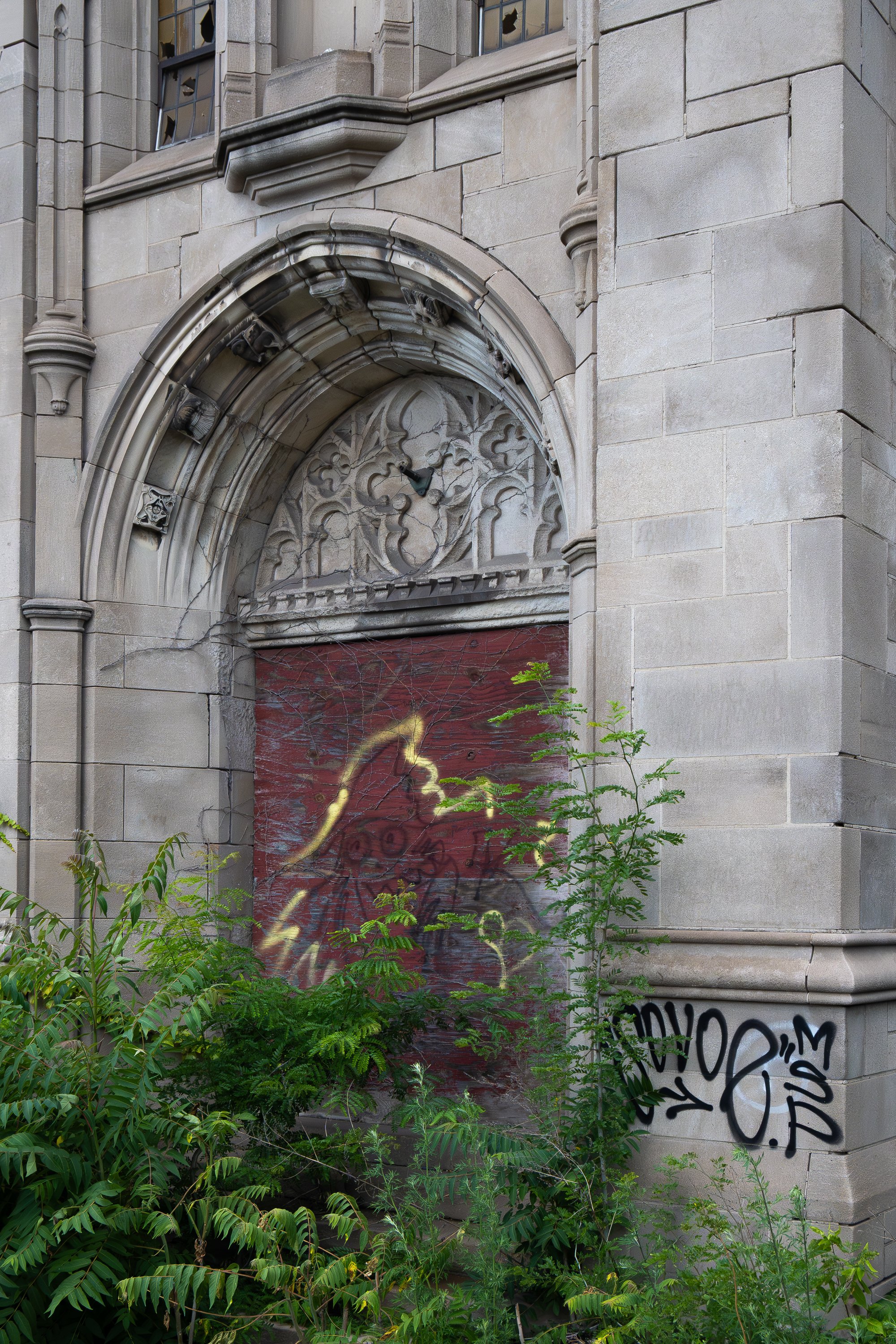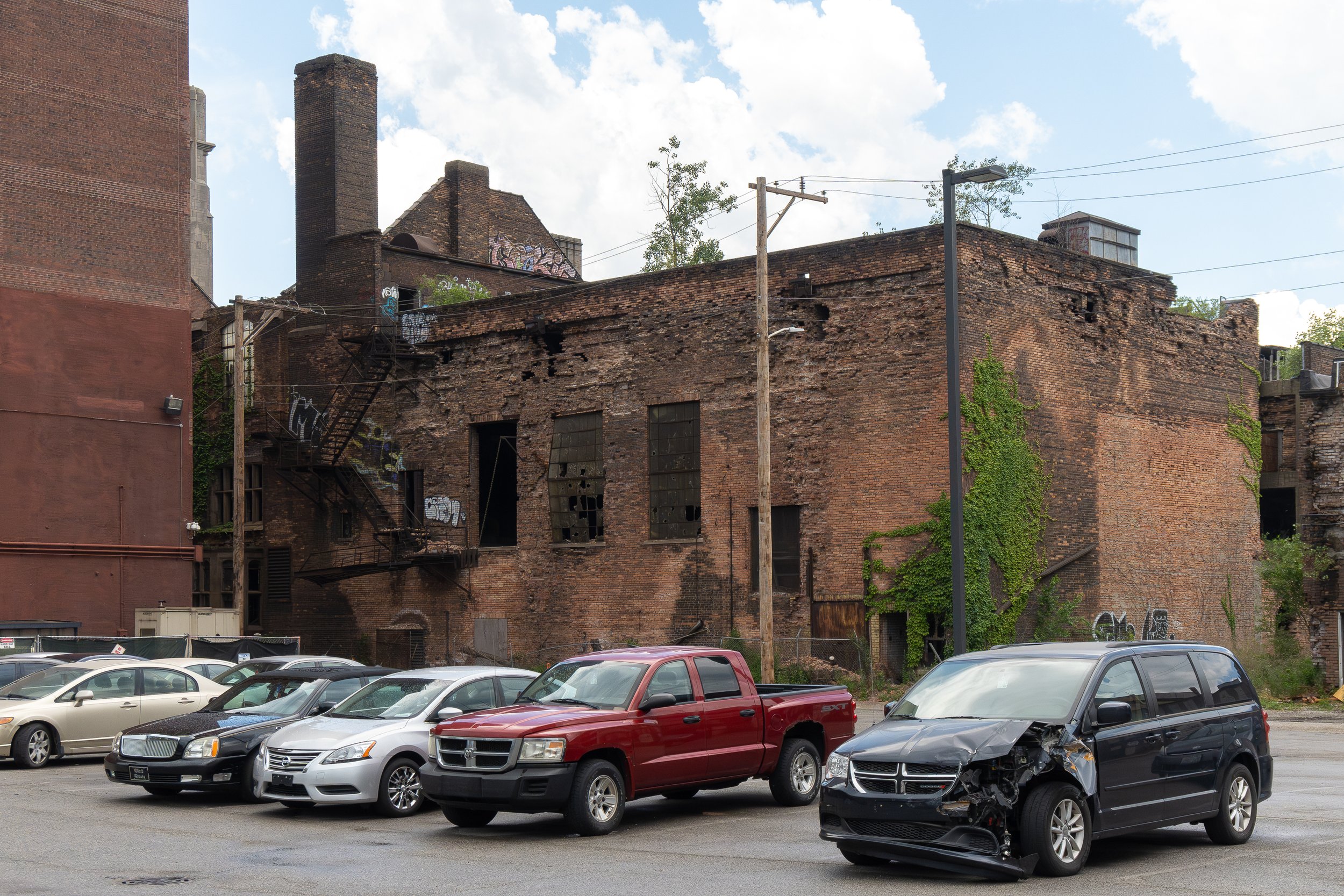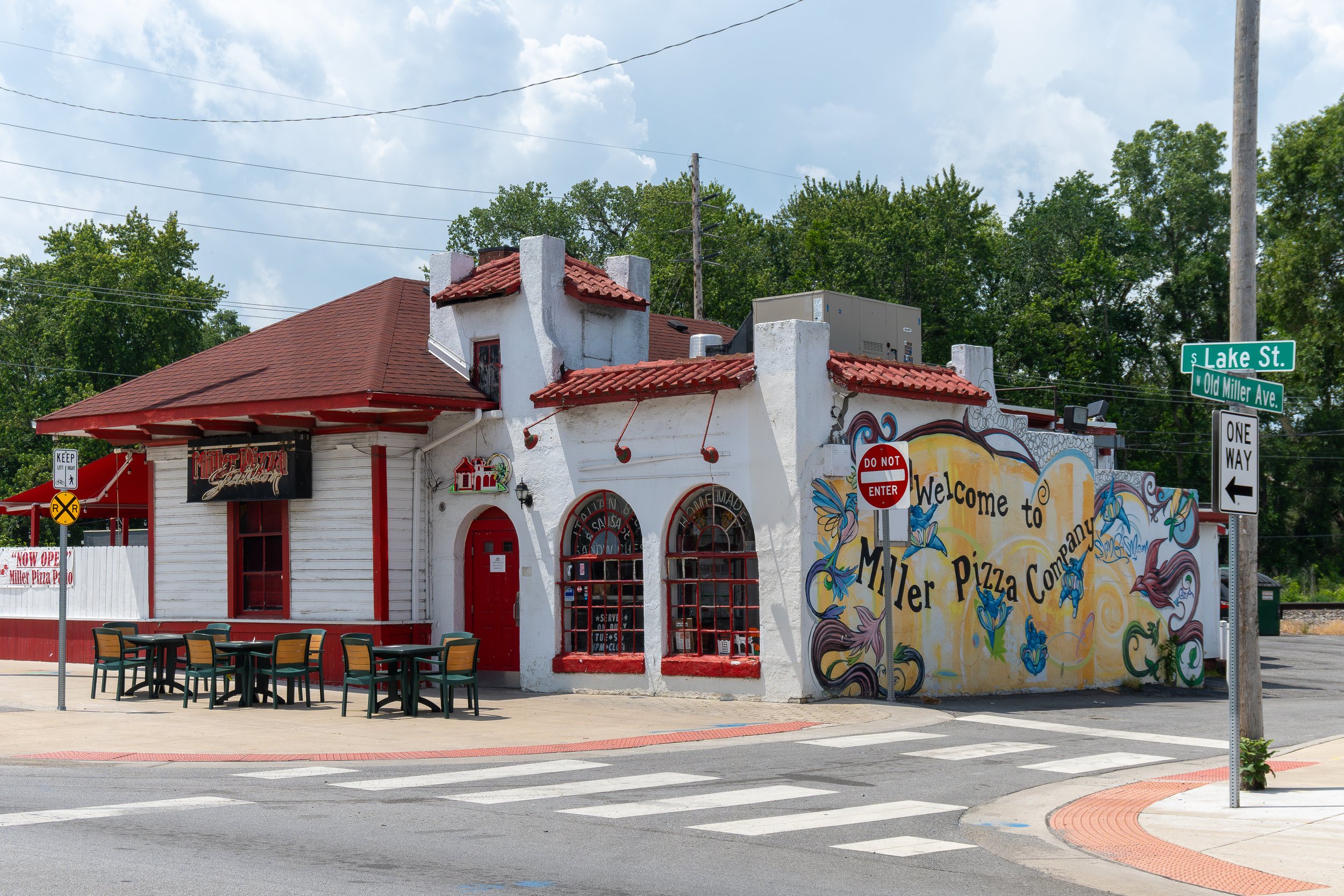"Gary’s the murder capital of the US," my Uber driver said confidently. He wasn’t correct; St. Louis holds the unfortunate distinction of having the most murders per capita in 2023. Normally I’d bite my tongue, but I’d just read that statistic and carefully set him straight.
However, Gary, Indiana was at the top of that grim chart 30 years ago, earning itself the ugly accolade many can't seem to forget.
That's the problem with Gary. Unfortunately, the reputation it earned during decades of hardship follows it like an impossibly long shadow at the end of a day that refuses to end.
Gary, once an attractive destination for those chasing the American Dream, descended from being in the top five biggest cities in Indiana with a booming economy to a place with substantially fewer people and a surplus of abandoned buildings. So how did the American city with so much to offer ultimately become a shell of what it once was?
A house engulfed in weeds and greenery after years of neglect.
Writing about Gary is tricky. There's a delicate balance to strike. Gary's sheer amount of urban decay is infamous within photography, urban exploration, and artist circles. It's usually one of the first things people mention about the city. Travelers have visited Gary to witness the swaths of empty, blighted buildings for themselves over the years, and every time someone discusses what they saw, the legend of "abandoned Gary" grows.
However, it's essential to remember that Gary is a city with thousands of residents who live and work there, keeping their city alive. It's not the ruin some say it is.
How does one respectfully showcase abandonment without being exploitative? Giving historical context to the present-day condition of Gary is essential to ensuring this doesn't become a soulless, unfeeling photo dump of urban decay. Knowing the story of these places is paramount to understanding them. Gary should be treated no differently.
This is how "The City of the Century," a place thousands of people poured into from around the world in the early 20th Century, evolved into what Business Insider later described in 2019 as "The Most Miserable City in the US."
A series of abandoned historic Edison row houses line the end of a block in Gary. The Edison house was unique in that it utilized poured concrete molds to quickly build housing for the booming population.
The Palace Theater at 791 Broadway was built in 1925 and closed in 1972. At this point, the once-grand theater has been vacant longer than it was ever open.
An empty school at the corner of W 21st Ave and Pierce Street.
The City of the Century
Giving historical context to the present-day condition of Gary is essential to ensuring this doesn't become a soulless, unfeeling photo dump of urban decay.
Gary, Indiana, was founded in 1906 when US Steel settled on undeveloped land 30 miles southeast of Chicago. Located at the bottom of Lake Michigan, the steel mill, known as Gary Works, became the largest of its kind in the world when it began production.
Named for one of the co-founders of the mill, Elbert H. Gary, the city quickly popped up around the mill to accommodate all the new steelworkers moving there. Thousands of people flocked to Gary for work, including many European immigrants seeking jobs in the steel mill. Alongside Europeans, thousands of Black Americans left the segregated South to find work up north in Gary, as did Mexican immigrants.
Some called it The City of the Century. Others called it Magic City.
Early on, Gary was booming, and Gary Works was the source of the healthy economy. The city grew and became the fifth-largest in the state roughly a decade after its founding. Growing steadily, the population peaked at 178,000 residents in the 1960s.
It was the last decade before Gary's residents would begin their goodbyes.
A senior living center that’s still in business. It has 2.8 stars and 12 reviews on Google.
Deindustrialization and Racism
Two primary factors led Gary into population decline and economic hardship.
First, during deindustrialization in the US, Gary was hit hard. As globalization, automation, and economic restructuring took place, manufacturing jobs in the US dwindled, leaving millions out of work and shrinking the middle class.
The steel mill, now antiquated and inefficient compared to overseas competitors, began layoffs to stay in business. This isn't a phenomenon localized to Gary, though; it happened across the 'Rust Belt' of America, devastating the economies of many other cities, too. Where tens of thousands of people once worked for Gary Works in the 1960s, only a few thousand were still around by the 1990s.
Today, even fewer people work for the mill as layoffs have continued as recently as this year.
As jobs left, the population followed. A city founded around a steel mill cannot survive if the steel mill itself shrinks its workforce. With overseas competition growing, Gary Works would no longer hold the title of largest steel manufacturer in the world.
The Fillmore Apartments building may have been home to dozens of steelworkers and their families when it was built in the early 1920s. Apartments.com lists the property rating of this roofless, abandoned building at 4 out of 5 (“great”).
Another series of abandoned historic Edison row houses.
But Gary Works' downsizing wasn't the only reason the city fell from its once lofty position as the fifth-largest in Indiana. Segregation and racism, an undercurrent that plagued the city from the beginning, also are to blame.
According to the Encyclopedia of Chicago, the integration of white European immigrants contrasted greatly with the marginalization and segregation of Black and Mexican residents who moved there for work. During its peak in the early 1920s, the KKK had roughly 250,000 members throughout the state, making it difficult and dangerous for marginalized communities to live peacefully. At a time when Gary was exploding in population, Black Americans escaping racism in the South didn't find Gary to be markedly different.
As Black Americans continued moving to Gary, most of the white population, unwilling to integrate and live among them, moved out and took their businesses out of Gary. Downtown, once a vibrant piece of The City of the Century's puzzle, suffered.
It’s unclear if this enormous building on Broadway in downtown Gary is abandoned or just empty. Note the lack of people on the street.
Detail on the array of signs that advertise businesses that do not appear to still be in operation.
A Guardian journalist who explored Gary in 2017 spoke to and quoted one of the city's residents, Maria Garcia:
"This street used to be filled with good neighbors. Mostly whites. Some were Europeans from Spain, Poland, and Germany, and some from Puerto Rico like myself. Then in 1981, people started moving out. They started seeing Black people coming in, and they said they would bring drugs and crime, so they left. I stayed because I don't judge by color."
According to another resident in that same article, Black people were largely unable to follow when white people moved out of Gary. Racism and economic disparity made living and working in nearby thriving cities difficult or impossible for Black Americans.
The back of Emerson High School. Built in 1909, the school was designed by St. Louis architect William Ittner. In the late-1920s, several Black students were permitted to attend the school, prompting boycotts by the white student body. As a result, another school would later be built specifically for Black children to maintain segregation.
The front of Emerson High School. In 1981, enrollment was too low to keep it a high school, so it was closed and reopened one year later as a magnet school. It lasted until 2008 when it was permanently closed due to a mold issue that was too severe to fix.
Vandals and urban explorers have routinely gone inside the abandoned building. In 2015, the body of a teenager from Chicago was found inside.
The Blight
When there's a significant population loss, the infrastructure left behind supports fewer people and eventually becomes abandoned if no one can maintain it. Houses are left without owners and succumb to the elements over time. Schools close due to not enough enrollment and become playgrounds for vandals. Businesses like laundromats and restaurants don't have enough business to sustain operations and are left to rot.
Urban decay is proven to increase crime, poverty, and social inequality, fueling the population loss cycle. The decades that followed the 1960s were bad for Gary. As crime and poverty rose, so too did the blight.
According to a 2015 study Abandoned America referenced in their article about Gary, the city was home to 13,000 abandoned properties, equating to roughly a third of its buildings at that time. Schools, houses, businesses, theaters, churches, and restaurants can still be found throughout Gary, but many are empty and in various states of disrepair.
Possibly Gary’s most iconic abandoned structure is the City Methodist Church downtown. Opened in 1926, the church lasted just under 50 years before closing permanently in 1975. Today, the church is open to the elements and tattered beyond repair.
In addition to the danger of their crumbling conditions, these unsecured and overlooked places can hold horrible secrets.
At one point, several blighted buildings in Gary were the final resting places for a series of murder victims. Left by a serial killer who was later apprehended, the bodies of at least seven people were discovered in abandoned buildings around the city.
In addition to that grim reality, arson is also a problem regarding the blight in Gary. A Medium writer and Gary native took a forensic look at one night in 1997 when a large part of downtown Gary burned due to suspected arson. His recollection of his experience as a boy and the in-depth look at the fire is fascinating.
Some of the blight, however, is being strategically removed. In 2020, the Gary Housing Authority demolished 14 derelict buildings along Broadway in downtown Gary to improve the look of the thoroughfare. In their opinion, removing the blight is akin to a beautification effort that also makes way for future development, and the buildings they removed were either too far gone to be saved or weren't historic enough to preserve.
Those derelict buildings that once stood in downtown Gary have been replaced by grassy fields that make Broadway look far less ruined than empty. Neither looks especially good on Gary.
A mural on the side of a building downtown.
These houses looked to be freshly vacated. They still have glass in the window frames on the second story.
Hope For Gary
While Gary is home to a surplus of blight after decades of loss, it's also home to thousands of people.
According to the latest numbers from the US Census Bureau, its population size in 2022 was 67,000. While that might be a far cry from its peak in the 60s, it's not small-town America, either.
I didn't photograph single-occupancy homes in Gary for the sake of maintaining residents' privacy. Still, I'd be remiss if I spent this entire article discussing blight without mentioning that most of the city is lived-in and occupied.
Several areas are genuinely lovely, like Miller Beach. Gary has plenty of city blocks that have seemingly avoided blight altogether and are as vibrant as any other Midwest city.
Miller Beach, annexed by Gary in 1918, has a modest and tidy retail corridor along Lake Street. There’s even a raised bike lane in front of this dry cleaner.
Above: A sign with an uplifting message to visitors.
Below: Other points of interest in Miller Beach.
Gary is also right next to Indiana Dunes National Park—a nice place to experience the beach and a hazy view of Chicago over the lake.
Though Gary has been plagued by a shrinking economy, racism, crime, poverty, and many other hardships during its 117-year history, Gary's not without hope.
It's hard to imagine the city ever again achieving the highs it did early on. But as cities similarly devasted by deindustrialization, such as Detroit, make strides to be more livable for its residents, a future renaissance for the people of Gary isn't out of the question. ✤
ADDITIONAL PHOTOGRAPHS
Above: The Roosevelt Auto Service Diagnostic Center, listed as permanently closed online, caught my eye because of the brilliant midcentury modern design of the building.
Below: Other angles on the same building.
Above: The enormous Knights of Columbus Building (1926) at Madison and 5th Avenue. A listing online says the building is now home to 119 apartments.
Below: Detail on the building and a church across the street.
The Police Department of Gary sits right up against several empty buildings.
Unclear if this is still an operating motel. I did not park in rear.
Looking toward the back of a set of bleachers that overlook the overgrown and abandoned track and field of Roosevelt HS. The corner of Jackson Street and W 23rd Ave. The immaculate Jackson Family Home is directly behind me.
When several Black students were permitted to attend all-white Emerson High School, protests erupted and prompted the building of a separate school to avoid integration. Theodore Roosevelt High School (pictured) was designed by St. Louis architect William Ittner and dedicated in 1931 as an all-Black K-12 school. It closed indefinitely in 2020.
A corner in Gary filled with occupied apartments.
Long-abandoned row houses can be found immediately across the street from homes that are maintained and occupied. The blight in Gary isn’t localized to one part of town.
Above: The Jackson Family Home is where pop-star and controversial figure Michael Jackson grew up. The house is well-maintained and perfectly landscaped compared to the condition of the neighborhood around it. It is surrounded by a fence that allows visitors to view the home from the street.
Below: More of the home.
Above: A cursory online search reveals that Gary is home to 21 abandoned schools. Spaulding Elementary School, right around the corner from Emerson, is one of them.
Below: More of Spaulding. I did not enter the building; the windows on the first floor are just completely gone.
Above: Arman’s has both an excellent sign and 4.6 stars with over 400 reviews on Google.
Below: Assorted empty buildings throughout Gary.
There’s no indication of what the restaurant that used to be here was called. The sign at the bottom of the panel says “Polish sausage, hot dogs, hamburgers.” I wonder if they were good.
Great sign for this laundromat.
An empty building with graffiti that reads: “JENNY’S MOVED TO INSIDE 5350 BROADWAY THE CITY MALL.”

































